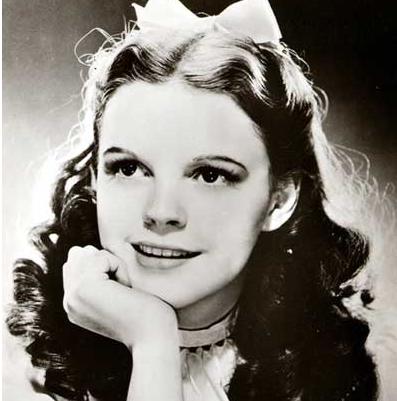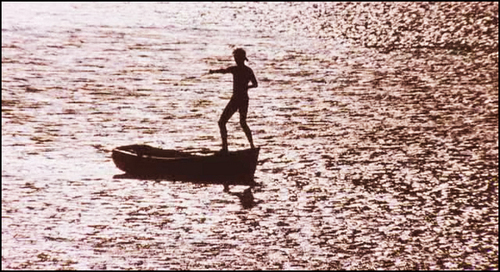Looking back at The Karate Kid (1984), which turned twenty-five years old this week, a thought keeps recurring.
Wow. . . Avildsen made it work twice.
John G. Avildsen is, in some ways, a director of little distinction when compared with well-known marquee names like Spielberg, Scorsese, Nolan, and Tarantino. The vast majority of his movies are utterly forgotten by the average filmgoer — indeed, he’s been nominated for Worst Director at The Razzies three times. And yet, like Victor Fleming decades earlier with his twin successes The Wizard of Oz and Gone with the Wind (both 1939 — read a great recent article on Fleming here), Avildsen has twice punched way above his weight, netting himself an Oscar for Best Director and giving birth to some of the most memorable moments in motion picture history.
His first triumph, made on a shoestring budget and a scant few weeks of shooting time, was a little picture called Rocky (1976). He had no money, no stars, no amazing effects, and yet Avildsen used camera, music, and editing to craft scenes of immense power and impact. Has there ever been a film, before or since, that ends on a more rousing wave of uplift? That takes such pains to create identification and empathy with its wide array of characters? That more patiently or expertly builds up to its cataclysmic swell of emotion? That has the guts and sense of timing to fade to black at the exact peak, frustrating our desire to know what happens next even as it leaves us too blissful to care?
Rocky did all of that and much more, and despite its fight scenes now looking like slow-mo hokum compared to the MMA-style mayhem that now rules on TV, it remains the most memorable and effective boxing film ever made. That’s really saying something, given the immense amount of solid competition the genre boasts.
But as other directors began ineptly looting and mimicking Avildsen’s style and innovations, it looked as if everything that made Rocky great would quickly become so cliché as to make a repeat impossible. We all know that sinking feeling when we begin perceiving the clunky wheels of the typical “Hollywood sports plot” turning — that excruciatingly slow crawl towards the utterly predictable final showdown, where the very last seconds of a contest are shamelessly milked until the hero finally hits the last shot/punch/goal/basket. Even the Rocky sequels couldn’t escape these pitfalls, and it would be hard to blame an audience for glumly concluding that Avildsen’s 1976 artistic triumph had spoiled the sports movie for all time.
So who would have guessed that, eight years later, Avildsen would essentially pull off the same trick again? How on earth did he once again make a Rocky-style plot arc work, without the end result becoming a pale pastiche?
He achieved this feat in large part by turning everything we remember from Rocky on its head. Ralph Macchio’s Daniel Larusso is played not as a thickheaded lummox, but as a fast-thinking, bone-skinny teen whose nasal Jersey whine sounds more like Rudolph the Red-Nosed Reindeer than Sylvester Stallone. He’s neither a down-and-out fighter with his best years behind him, nor is he looking to “go the limit” to prove something profound to himself. He’s just a kid at the very beginning of his adult life, who for most of the film limits his ambition to simply not getting beat up. Similarly, Elizabeth Shue’s Ali Mills is light years away from Talia Shire’s Adrian Pennino: rich instead of poor, charming rather than an ugly duckling, sociable not shy. And Pat Morita’s unforgettable Mr. Miyagi isn’t washed up or pathetically ambitious like Burgess Meredith’s Mickey Goldmill — he’s the very epitome of contentment and balance and wisdom.
Rocky achieved its verisimilitude with generous dollops of grime, rust, blood and profanity, whereas The Karate Kid is notable for its relative wholesomeness (note how Elizabeth Shue even wears a one-piece swimsuit to the beach instead of the obligatory teen-movie bikini). The music marks yet another telling departure. Rocky‘s iconic score, by Bill Conti, was a mix of 1970s funk, heroic brass, and a choir acting as a Greek chorus, all combined into a sonic brew that still ranks as one of the most recognizable and rousing in film history. For The Karate Kid, Conti was once again brought in as the composer. But this time, in between pop songs like Bananarama’s “Cruel Summer,” he chose a light mix of delicate strings, only occasionally allowing them to burst forth into full orchestral splendor. For the training montage, Conti completely eschews Rocky‘s reliance on trumpeting brass and instead opts for the lonely skirling of Gheorghe Zamfir‘s pan flute, creating a more spiritual and intimate vibe.
Avildsen’s camera, for its part, is probing and observant, often making excellent use of telephoto lenses to highlight what would otherwise be a missed reaction or expression. He achieves true poetry in the training scenes: on the beach among the circling cranes, on the lake amidst glittering golden waters, and even in the fights and strategies that pulse through the climactic tournament. He also warred with the studio when necessary to protect certain crucial scenes, such as the one where a drunken Miyagi reveals his service in WWII to Daniel. That one adds a whole new layer of depth to what was already a touching and authentic relationship, and yet the studio wanted it cut, deeming it superfluous.
On top of all that, the excellent screenplay by Robert Mark Kamen (who distinguished himself more recently by penning the immensely satisfying kidnap flick Taken) consistently leads Avildsen down novel paths. The teen villains of the story (portrayed by, among others, Steve McQueen’s son Chad and Elizabeth Shue’s brother Andrew) are refreshingly human, at times even gaining our sympathy. Unlike the usual faceless, gormless teens in Hollywood fare, this group is delineated exceedingly well, and remain recognizable as individuals even when hiding behind Ray Harryhausen-esque skeleton makeup in a genuinely chilling night scene. Kamen fleshed out his bad guys so well that the Cobra Kais, led outside the dojo by actor William Zabka’s smirking blond-haired bad boy Johnny Lawrence, now have a sizable fan following among Karate Kid aficionados. One admirer even made a clever YouTube re-edit of the final fight so that Johnny wins:
[youtube NCDEoodZD90 nolink]
Meanwhile, a band called No More Kings has made a song about the redemption of Johnny called “Sweep the Leg,” with a fun “Karate Kid continuation” music video written and directed by Zabka himself:
[youtube r3iYmgDJ4FE nolink]
In interviews, Zabka has expressed pleasant surprise that The Karate Kid remains so alive in the popular culture, calling it a “sacred film” and noting that there are even Cobra Kai bowling teams out there. It’s enough to convince me that The Karate Kid II should have been all about Miyagi reforming the Cobra Kais, slowly rehabilitating them into good guys.
In so many ways, Avildsen’s 1984 film is courageous in the way it deviates from the instantly recognizable Rocky formula. How strong must the pressure have been on Avildsen to make the easy, safe choices, mimicking his earlier masterpiece in every detail? His resistance to those impulses does him credit, and hence to dismiss The Karate Kid as a mere Rocky clone is to do it an injustice.
But if there is one overriding secret to the success of The Karate Kid, it is the transcendent performance of Pat Morita as Mr. Miyagi. In 1984, most Americans still conceived of the East, at least in cinematic terms, as a mystical wonderland of Kung-Fu magic and swordplay. Hong Kong directors like Jackie Chan, Sammo Hung, John Woo, Tsui Hark, and Ringo Lam were only beginning to create the explosion of masterful, modernized pictures that would eventually change the entire way the world looked at Asians on film. It’s hard to remember how utterly fresh a character like Mr. Miyagi was to 1984 audiences, completely unexposed as they were to the renaissance happening in Hong Kong. Fully fleshed out, with a compelling backstory and potent motivations, he was written as charmingly colloquial and disheveled, a character who could consistently shatter the stereotype of the “magic Asian” to raucously humorous effect.
Almost always in American cinema — to this day — Asian protagonists are depicted as cardboard caricatures at best and laughingstocks at worst. Avildsen rejected the initial front-runner for the part of Miyagi — the great Japanese actor Toshirô Mifune — and instead bet his entire film on the talents of a thoroughly Americanized stand-up comedian, one who in his salad days used to bill himself in comedy clubs as “the Hip Nip.” Comedians have a strangely robust record of shining in good dramatic roles — think Robin Williams, Bill Murray, Jim Carrey, Tom Hanks, Billy Crystal, Steve Martin, et al. — and they often manage to strike a solid balance between laughs and drama. Morita did exactly that in The Karate Kid: affecting just the right Japanese accent, leavening his character’s power and seriousness with just enough comedy, and always figuring out ways to make you laugh with Miyagi instead of at him.
If you haven’t seen The Karate Kid in awhile, you’re in for a treat — Mr. Miyagi was no fluke, he remains one of the most winning characters in the history of cinema. It was the role of a lifetime for Morita, who garnered a well-deserved Oscar nomination (as it happened, he lost that year to Haing S. Ngor in The Killing Fields, who himself became the first Asian to win an acting Oscar). Any number of others would have played Miyagi as either an embarrassing joke or an irremediably grim Samurai grandmaster. But in his every glare, mannerism, and pose, Morita elevates the character into a veritable Gandalf. Look closely at the scene when he bows gravely to a shocked Daniel (who has just discovered that his hated chores were actually important lessons), or when towards the end he smacks his hands together with such orchestra-enhanced thunder that the audience jumps. In those moments The Karate Kid — so often seen as an also-ran and afterthought to Rocky — breaks away from that film’s orbit and soars free all on its own.
So Avildsen pulled it off not once, but twice — I still can’t believe it. And if he never makes another great movie, he can still sit back and rest easy, secure in the knowledge that two of the very best fight pictures ever made have his name on them. That he did both of them on such low budgets should give hope to conservative filmmakers who assume liberal Hollywood will never give them a chance. There is nothing in The Karate Kid that couldn’t be accomplished on a micro-budget — all you would need is the gumption to dream up the script.
But will anyone take on the challenge, as Avildsen did those many years ago? Only time will tell. Until then: wax on, wax off. . . wax on, wax off. . . .









COMMENTS
Please let us know if you're having issues with commenting.